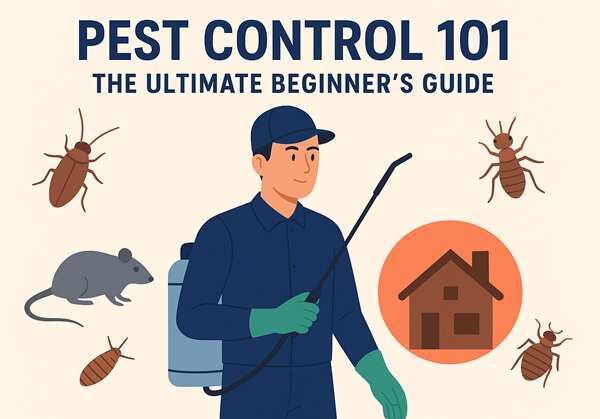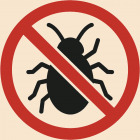Pest Control 101: The Ultimate Beginner’s Guide
This guide untangles the basics of home pest control, so you can spot trouble early, pick sensible DIY moves, and know when to call an exterminator. Practical, plainspoken, and not stuffed with fluff.

First things first: what counts as a pest?
A pest is any organism that damages your health, home, or peace of mind. Common offenders include rodents (rats, mice), cockroaches, ants (including carpenter ants), bed bugs, fleas, mosquitoes, and wood destroying insects like termites. Each needs a different approach: what kills roaches rarely solves a termite infestation.
Spotting trouble: simple ID tips
- Droppings, gnaw marks, shredded insulation , likely rodents, time to consider rodent control.
- Rust colored spots on mattresses, itchy bites aligned in a row , suspicious for bed bugs, which need targeted bed bug treatment and sometimes a professional bed bug exterminator.
- Mud tubes on foundations, hollow sounding wood , possible termite activity; arrange a termite inspection without delay.
- Clusters of winged ants near windows or doors , could be carpenter ants or swarmers; both deserve attention.
- Persistent buzzing nests in eaves or near the yard , treat as a stinging insect problem, not a DIY casual fix; seek safe wasp nest removal or bee removal services if necessary.
You don't need to be an entomologist; good photos and notes about where you’re seeing activity will make any follow up much easier.
Prevention: the highest return investment
Prevention beats reaction every time. A few habits produce big results:
- Seal entry points. Use caulk, metal mesh, or weatherstripping around pipes, vents, and doors. Rodents and roaches exploit gaps the width of a pencil.
- Reduce moisture. Fix leaky pipes and maintain gutters; many pests thrive in damp conditions.
- Store food properly. Airtight containers and a clean sink are a roach and ant deterrent.
- Declutter and ventilate. Cardboard and piles of clothes invite bed bugs and harborage for mice.
- Outdoor maintenance. Trim vegetation away from the house, remove stacked lumber, and keep mulch thin to reduce termite and ant habitats.
Small fixes prevent expensive headaches later, such as termite treatment or costly structural repairs.
DIY tactics that actually work
Not all problems need a pro. Try these first, safely and sensibly:
- Bait stations for mice and ants, placed where you see droppings or trails.
- Boric acid powder and gel baits for cockroaches, used in cracks and behind appliances.
- Sticky traps to monitor insect types and activity levels.
- Bed encasements and hot washing for suspected bed bug infestations, followed by vigilant inspection.
- Mosquito source control: remove standing water, maintain screens, and consider yard treatments for seasonal nuisance control.
Use pesticides according to label directions, keep pets and children away from treated areas, and wear gloves when handling chemicals.
Call a professional if
Bring in an exterminator if you face:
- Visible structural damage or signs of termite control issues.
- A fast growing rodent problem, or when poisons pose risk to kids or pets.
- Recurrent bed bug sightings after DIY efforts.
- Large stinging insect nests that require safe wasp or bee removal.
- Commercial or multi unit housing infestations that need a coordinated response.
Many pest control companies offer integrated pest management approaches, which favor the least toxic solutions first.
Quick answers to common beginner questions
- Can I treat bed bugs myself? Small, early infestations can sometimes be handled with laundering, encasements, and heat treatments, but persistent infestations often require a certified bed bug exterminator.
- Do DIY roach killers work? Baits and gels can reduce numbers; heavy infestations may need professional grade products.
- What about termite treatment cost? Prices vary widely based on location, extent of infestation, and treatment type; get multiple termite inspection quotes to compare.
Final thought
Pest control is part detective work, part prevention, and part knowing when to pass the baton to pros. Respect the biology of the pest, prioritize simple exclusion and sanitation, and keep safety front and center when using treatments. A calm, methodical approach will save money and stress, and keep your home feeling like home. #PestControl #pest #bugs
